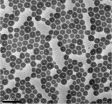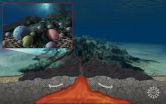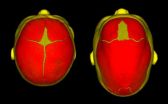(Press-News.org) TAMPA, Fla. (Nov. 19, 2012) – In three studies published in the current issue of Technology and Innovation – Proceedings of the National Academy of Inventors®, innovators unveil creative technologies that could change our sources of energy, change our use of energy, and change our lives.
Untapped energy in the oceans
The kinetic energy in the Florida Current and in Florida's ocean waves can be captured and used, said Howard P. Hanson of the Southeast National Marine Renewable Energy Center at Florida Atlantic University.
"Capturing the kinetic energy of the Florida Current will require both materials advances and new designs for marine current turbines and their efficient deployment," said Hanson. "The hydrokinetic energy of tidal and open-currents, as well as ocean waves, and the thermal potential of the oceanic stratification, can be recovered using ocean thermal conversion technology."
Hanson calls this concept "marine renewable energy," or MRE, and noted in his article that the U.S. Department of Energy has formed three national MRE centers to investigate the resource potential in the oceans and to advance the technology for recovering MRE.
Nanoscale "rectennas" can convert waste thermal energy to electricity
"Converting waste heat to electrical energy can be a reality by using a rectenna, a combination of high frequency antenna and a tunnel diode," wrote three clean energy engineers from the University of South Florida's Clean Energy Resource Center.
According to article co-author Yogi Goswami, thermal radiation, or the infrared (IR) portion of the electromagnetic spectrum, is often an overlooked source of renewable energy and more than half of the power provided by the sun – both directed and re-radiated – lies in the infrared part of the spectrum.
"If the IR radiation potential of the earth could be harvested with 75 percent efficiency, it would generate more energy per unit area than a fixed orientation solar cell located in a prime solar location," said study co-author Subramanian Krishnan.
Rectenna components (antenna and rectifier) used to recapture wasted IR radiation is developed from the decades old concept of using the wave nature of light rather than its thermal effect. Recent advances in nanotechnology have made possible the harvesting of solar energy by rectenna more viable, they said. Recent research has shown that rectenna can be developed at IR frequencies with existing technology and used for IR energy conversion.
For co-author Elias Stefanokos, the approach of using a rectenna in combination with a plasmonic blackbody emitter would improve efficiency of all systems.
"This research will significantly increase the efficiency of photovoltaic cells, at little added cost, by integrating the plasmonic emitter with the cell," said Stefanokos.
Their paper presents the current state-of-the-art in the field of rectenna-based conversion with a focus on its critical components.
Nanotechnology solutions for greenhouse light
"Farmers are at the mercy of weather that can cause damage to their crops," wrote a team of physicists from the University of South Florida. "Consequently, greenhouse farming and urban agriculture are being looked at as a more efficient and cost effective way to grow produce."
Sarath Witanachchi, Marek Merlak and Prasanna Mahawela, of the USF Department of Physics, presented the specifics for a new nanophosphor-based electroluminesence lighting device that caters to the exact wavelengths of light required for photosynthesis in indoor, hydroponic agriculture. The new, nanotechnology-based grow light also has the potential to reduce energy costs significantly."
"Conventional technologies used in today's agriculture are inefficient and lead to natural resource waste and degrade the environment," said Witanachchi. "Urban agriculture will become the choice in the future. Nanophosphors required to fabricate the active layer of the electroluminescence device are grown by a microwave plasma process, which was developed at the University of South Florida. This process enables the growth of crystalline nanophosphors directly on a substrate as a uniform coating without further processing steps."
###
The National Academy of Inventors® is a 501c3 non-profit organization comprised of U.S. and international universities and non-profit research institutes. It was founded in 2010 to recognize and encourage inventors with a patent issued from the U.S. Patent and Trademark Office, enhance the visibility of academic technology and innovation, encourage the disclosure of intellectual property, educate and mentor innovative students, and translate the inventions of its members to benefit society. Email info@academyofinventors.org; web www.academyofinventors.org
The editorial offices of Technology and Innovation are located at the University of South Florida, Office of Research & Innovation, 3702 Spectrum Blvd., Suite 175, Tampa, Florida, 33612 USA. Tel: +1-813-974-1347. Email TIJournal@research.usf.edu
News Release by Florida Science Communications, www.sciencescribe.net
New energy technologies promise brighter future
Nanotechnology and Florida's oceans to play a role in 'energizing' our lives
2012-11-20
ELSE PRESS RELEASES FROM THIS DATE:
Lava dots: Rice makes hollow, soft-shelled quantum dots
2012-11-20
HOUSTON -- (Nov. 19, 2012) -- Serendipity proved to be a key ingredient for the latest nanoparticles discovered at Rice University. The new "lava dot" particles were discovered accidentally when researchers stumbled upon a way of using molten droplets of metal salt to make hollow, coated versions of a nanotech staple called quantum dots.
The results appear online this week in the journal Nanotechnology. The researchers also found that lava dots arrange themselves in evenly spaced patterns on flat surfaces, thanks in part to a soft outer coating that can alter its shape ...
Kessler Foundation researchers predict hidden epidemic of neurological disability for India
2012-11-20
West Orange, NJ. November 19, 2012. The 'Global Perspectives' published in the Nov. 20, 2012 issue of Neurology®, the medical journal of the American Academy of Neurology, features "Neurologic Disability: A Hidden Epidemic for India". The authors, a team of US and Indian scientists, detail three emerging trends contributing to this public heath problem and outline measures to stem its growth. Abhijit Das, MD, DM, Amanda Botticello, PhD, MPH, and Glenn Wylie, DPhil, are researchers at Kessler Foundation in West Orange, New Jersey. Kurupath Radhakrishnan, MD, DM, FAAN, is ...
Yeast protein breaks up amyloid fibrils and disease protein clumps differently
2012-11-20
PHILADELPHIA — Several fatal brain disorders, including Parkinson's disease, are connected by the misfolding of specific proteins into disordered clumps and stable, insoluble fibrils called amyloid. Amyloid fibrils are hard to break up due to their stable, ordered structure. For example, α-synuclein forms amyloid fibrils that accumulate in Lewy Bodies in Parkinson's disease. By contrast, protein clumps that accumulate in response to environmental stress, such as heat shock, possess a less stable, disordered architecture.
Hsp104, an enzyme from yeast, breaks up both ...
New study review examines benefits of music therapy for surgery patients
2012-11-20
LEXINGTON, Ky. (Nov. 19, 2012) — A new study review published by the University of Kentucky found that music therapy can be beneficial to patients before, during and after a surgical procedure and may reduce pain and recovery time.
Published in the Southern Medical Journal, the review examined the use of music in the preoperative, intraoperative and postoperative stages of the surgical process, and music was shown to have positive results in all three stages. Patients were less anxious before the procedure and recovered more quickly and satisfactorily after by being exposed ...
'Dark Energy': Life beneath the seafloor discussed at upcoming American Geophysical Union conference
2012-11-20
"Who in his wildest dreams could have imagined that, beneath the crust of our Earth, there could exist a real ocean...a sea that has given shelter to species unknown?"
So wrote Jules Verne almost 150 years ago in A Journey to the Center of the Earth. Verne probably couldn't have imagined the diversity of life that researchers observe today under the ocean floor.
Scientists affiliated with the National Science Foundation (NSF) Center for Dark Energy Biosphere Investigations (C-DEBI) will discuss recent progress in understanding life beneath the seafloor at the American ...
Seattle Children's Research Institute helps identify causes of sagittal craniosynostosis
2012-11-20
Seattle Children's Research Institute, together with an international team of scientists and clinicians from 22 other institutions, have identified two genetic risk factors for the most common form of non-syndromic craniosynostosis, a birth defect in which the bony plates of an infant's skull prematurely fuse. The condition is known as sagittal craniosynostosis and often results in an abnormal head shape and facial features.
The study identified two genes (BMP2 and BBS9) associated with sagittal craniosynostosis that are known to be involved in broader skeletal development.
Results ...
Martian history: Finding a common denominator with Earth's
2012-11-20
Washington, DC — A team of scientists, including Carnegie's Conel Alexander and Jianhua Wang, studied the hydrogen in water from the Martian interior and found that Mars formed from similar building blocks to that of Earth, but that there were differences in the later evolution of the two planets. This implies that terrestrial planets, including Earth, have similar water sources--chondritic meteorites. However, unlike on Earth, Martian rocks that contain atmospheric volatiles such as water, do not get recycled into the planet's deep interior. Their work will be published ...
Faulty development of immature brain cells causes hydrocephalus
2012-11-20
Researchers at the University of Iowa have discovered a new cause of hydrocephalus, a devastating neurological disorder that affects between one and three of every 1,000 babies born. Working in mice, the researchers identified a cell signaling defect, which disrupts immature brain cells involved in normal brain development. By bypassing the defect with a drug treatment, the team was able to correct one aspect of the cells' development and reduce the severity of the hydrocephalus. The findings were published online Nov. 18 in the journal Nature Medicine.
"Our findings ...
CCNY landscape architect offers storm surge defense alternatives
2012-11-20
The flooding in New York and New Jersey caused by Superstorm Sandy prompted calls from Gov. Andrew Cuomo and other officials to consider building storm surge barriers to protect Lower Manhattan from future catastrophes. But, such a strategy could make things even worse for outlying areas that were hit hard by the hurricane, such as Staten Island, the New Jersey Shore and Long Island's South Shore, a City College of New York landscape architecture professor warns.
"If you mitigate to protect Lower Manhattan, you increase the impact in other areas," says Catherine Seavitt ...
New tumor tracking technique may improve outcomes for lung cancer patients
2012-11-20
PHILADELPHIA— Medical physicists at Thomas Jefferson University and Jefferson's Kimmel Cancer Center are one step closer to bringing a new tumor-tracking technique into the clinic that delivers higher levels of radiation to moving tumors, while sparing healthy tissue in lung cancer patients.
Evidence has shown a survival advantage for lung cancer patients treated with higher doses of radiation. Therefore, there is an increased interest to find novel ways to better track tumors—which are in constant motion because of breathing—in order to up the dosage during radiation ...
LAST 30 PRESS RELEASES:
Home-delivered groceries improve blood sugar control for people with diabetes facing food insecurity
MIT researchers identified three cognitive skills we use to infer what someone really means
The Iberian Peninsula is rotating clockwise according to new geodynamic data
SwRI, Trinity University to study stable bacterial proteins in search of medical advances
NIH-led study reveals role of mobile DNA elements in lung cancer progression
Stanford Medicine-led study identifies immune switch critical to autoimmunity, cancer
Research Alert: How the Immune System Stalls Weight Loss
Glucagon-like peptide 1 receptor agonist use and vertebral fracture risk in type 2 diabetes
Nonadherence to cervical cancer screening guidelines in commercially insured US adults
Contraception and castration linked to longer lifespan
An old jeweler’s trick could unlock next-generation nuclear clocks
Older age, chronic kidney disease and cerebrovascular disease linked with increased risk for paralysis and death after West Nile virus infection
New immune role discovered for specialized gut cells linked to celiac disease
A new ‘hypertropical’ climate is emerging in the Amazon
Integrated piezoelectric vibration and in situ force sensing for low-trauma tissue penetration
Three-hit model describes the causes of autism
Beech trees use seasonal soil moisture to optimize water uptake
How thinning benefits growth for all trees
Researchers upgrades 3-PG forest model for improved accuracy
Achieving anti-thermal-quenching in Tb3+-doped glass scintillators via dual-channel thermally enhanced energy transfer
Liquid metal modified hexagonal boron nitride flakes for efficient electromagnetic wave absorption and thermal management
Failure mechanisms in PEM water electrolyzers
Study captures how cancer cells hide from brain immune cells, shows that removing their “don’t eat me” signals stops their escape
New breakthrough in detecting ‘ghost particles’ from the Sun
Half of people arrested in London may have undiagnosed ADHD, study finds
From dots to lines: new database catalogs human gene types using ’ACTG’ rules
Persistent antibiotic resistance of cholera-causing bacteria in Africa revealed from a multinational workshop for strengthening disease surveillance
SwRI, Trinity University to synthesize novel compound to mitigate effects of stroke, heart attack
Novel endocrine therapy giredestrant improves disease-free survival over standard of care for patients with early-stage breast cancer in phase III lidERA trial
Gen Z views world as "scary place" with growing cynicism about ability to create change
[Press-News.org] New energy technologies promise brighter futureNanotechnology and Florida's oceans to play a role in 'energizing' our lives


